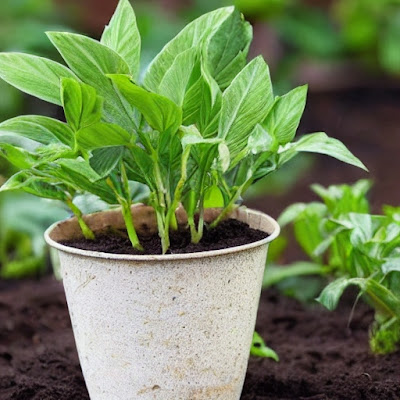How to Grow Ginger in Containers?
Ginger is a popular spice used in cooking and also has
numerous health benefits. Growing ginger at home can be a fun and rewarding
experience, and it's possible to do so using store-bought ginger root. Growing
ginger in containers is a great option for those who have limited garden space
or live in areas with cooler climates.
The process of growing ginger from store-bought ginger in
containers is straightforward, and it requires minimal effort and materials. In
this guide, we will go through the step-by-step process of growing ginger in
containers, from selecting the ginger root to harvesting the ginger.
Growing Ginger Step-by-Step Process:
Step 1: Selecting the Ginger Root
The first step in growing ginger in containers is to select
the right ginger root. It's essential to choose a fresh ginger root that is
plump, firm, and has not been treated with any chemicals or pesticides. Avoid
purchasing ginger that is shriveled or has mold on it.
Step 2: Preparing the Ginger Root
Before planting the ginger root, it needs to be prepared for
planting. Begin by soaking the ginger root in water overnight. This will help
to remove any inhibitors that may prevent the ginger from sprouting. After
soaking, cut the ginger into smaller pieces, ensuring that each piece has at
least one "eye" or bud. The bud is where the ginger will sprout from.
Step 3: Choosing the Container
When selecting a container for growing ginger, choose a
container that is at least 12 inches deep and wide. Ginger grows horizontally,
so it needs sufficient space to grow. Ensure that the container has drainage
holes to prevent waterlogging.
Step 4: Preparing the Soil
Ginger thrives in well-draining soil that is rich in organic
matter. Mix equal parts of potting soil and compost to create a nutrient-rich
soil. Add a layer of gravel or stones at the bottom of the container to aid
drainage.
Step 5: Planting the Ginger
Fill the container with the prepared soil, leaving a few
inches of space at the top. Plant the ginger root pieces about an inch deep,
with the bud facing up. Ensure that each piece is spaced at least 6 inches
apart to allow room for growth. Cover the ginger with soil, pressing it firmly
around the roots.
Step 6: Watering the Ginger
Water the ginger immediately after planting, ensuring that
the soil is moist but not waterlogged. Ginger prefers moist soil, so it's
essential to keep the soil consistently moist. Water the ginger regularly,
ensuring that the soil never dries out completely.
Step 7: Providing the Right Conditions
Ginger thrives in warm and humid conditions, with
temperatures ranging from 68-77°F (20-25°C). Place the container in a warm and
humid location, away from direct sunlight. To increase humidity, mist the
leaves regularly or place a tray of water near the container.
Step 8: Fertilizing the Ginger
To ensure that the ginger has sufficient nutrients,
fertilize it every two weeks with a balanced fertilizer. Follow the
instructions on the fertilizer package for application rates.
Step 9: Managing Pests and Diseases
Ginger is relatively pest and disease-resistant, but it's
essential to monitor it regularly for any signs of pests or diseases. Treat any
infestations or diseases immediately to prevent them from spreading.
Step 10: Harvesting the Ginger
Ginger takes between 8-10 months to mature, depending on the
variety and growing conditions. When the ginger is ready to harvest, the leaves
will begin to yellow and die back. Gently dig up the ginger, being careful not
to damage the roots. Use a sharp knife or scissors to cut off the desired
amount of ginger, leaving the rest to continue growing.
conclusion
In conclusion, growing ginger from store-bought ginger in
containers is a fun and rewarding experience that can be done with minimal
effort and materials. Following the step-by-step process outlined in this
guide, you can successfully grow ginger in containers, even if you have limited
garden space or live in cooler climates. Remember to choose a fresh ginger
root, prepare it properly for planting, select a suitable container and soil,
provide the right conditions, fertilize and monitor for pests and diseases, and
harvest the ginger when it's ready. With patience and care, you can enjoy fresh
ginger from your own garden, adding flavor and nutrition to your meals.

Comments
Post a Comment